Battery
battery power
5000 mAh
Battery power, or battery capacity, represents the amount of electrical energy that a battery can store. More battery power can be an indication of longer battery life.
has wireless charging
ZTE Axon 40 Ultra
It supports a wireless charging standard such as Qi. To charge the device, you simply put it down on a compatible charging pad.
Supports fast charging
ZTE Axon 40 Ultra
Fast charging technologies, like Qualcomm’s Quick Charge or MediaTek’s Pump Express, are used to reduce the time it takes to charge a device. For example, with Quick Charge 3.0, the battery can be charged to 50% in just 30 minutes.
charging speed
80W
Charging speeds are expressed in watts (W), a measure of electrical power. A higher wattage results in a faster charging speed. In order to achieve the advertised charging speed, it is important to use a compatible charger.
has a removable battery
ZTE Axon 40 Ultra
The battery is removable and can be replaced by the user if broken.
Has an ultra power-saving mode
ZTE Axon 40 Ultra
The ultra power-saving mode, also called low power mode, is an effective way to extend the battery life of the device. Usually, it involves limiting screen brightness and contrast, disabling location services, restricting connectivity, and turning off nonessential apps.
has a battery level indicator
ZTE Axon 40 Ultra
An indicator shows you when the device has low battery.
Battery life
Unknown. Help us by suggesting a value.
The device’s battery life (when in use) as given by the manufacturer. With a longer battery life you have to charge the device less often.
has a rechargeable battery
ZTE Axon 40 Ultra
The battery can be recharged and used over again.
ZTE Axon 40 Ultra score card
Swipe to scroll horizontally
| Attributes | Notes | Rating |
|---|---|---|
| Design | The ZTE Axon 40 Ultra feels premium to hold, and looks attractive too. | 4/5 |
| Display | With a good-looking curved display, the Axon is good for movies and games. | 4/5 |
| Performance | Boasting a high-end processor and lots of RAM, the ZTE is as powerful as you need a phone to be. | 4/5 |
| Camera | The ZTE Axon 40 Ultra’s cameras are good… except its front-facing one, which is disappointing. | 3.5/5 |
| Battery | The ZTE won’t impress or disappoint with its battery, though charging is nice and fast. | 3.5/5 |
| Software | The Axon 40 Ultra has a cleanish-looking fork of Android with big buttons that are easy to press. | 4/5 |
| Value | ZTE could have easily sold the Axon 40 Ultra for more than it did, making this a great-value flagship phone. | 4/5 |
ZTE Axon 40 Ultra cameras
Since we’ve mentioned it already, let’s first look at the ZTE Axon 40 Ultra’s front camera.
It’s a 16-megapixel f/2.0 snapper; but the specs don’t quite matter for an under-display camera. More important are the AI smarts that help the camera to “work” through the screen – and there’s clearly an issue here. Selfies look pretty horrible.
Image 1 of 2
The first ZTE Axon 40 Ultra selfie sample(Image credit: Future)
The second ZTE Axon 40 Ultra selfie sample(Image credit: Future)
There’s a lot of halation in snaps taken with the front camera – this is basically where light spreads beyond where it’s meant to be – and some noticeable overexposure issues, too. Add to this that in many instances the AI overcompensates, and you get problems with oversharpening as well. All in all, we took very few selfies that we’d be happy to share with anyone (except in this review, of course).
In terms of the rear snappers, the Axon 40 Ultra offers three rear cameras, each with a high-res 64-megapixel sensor. It’s a valiant effort, but does it pay off? Not exactly.
The main camera has a f/1.6, 35mm lens with OIS. The ultra-wide sensor is a 16mm and f/2.4, while the final one has a 3.5mm periscope lens that’s f/3.5 and 91mm.
You won’t be taking 64-megapixel pictures with these cameras, however – unless you jump into the Settings menu to enable it. Instead, the phone uses pixel binning to take 12-megapixel snaps. Pixel binning basically combines camera pixels to create larger ones; read our guide on the tech here.
(Image credit: Future)
In well-lit settings, the main camera actually performed pretty well, although with inconsistent results. Likely thanks to the pixel binning, pictures could be bright with vibrant colors, and the huge lenses led to a more natural and attractive depth of field than on your standard smartphone camera photo.
When we talk about inconsistencies, we’re referring to the phone’s viewfinder. Pictures would sometimes look pixelated on the phone’s screen, or displaying oddly flat colors; but these issues generally wouldn’t show up in the resulting picture. Odd, but things could be worse.
On a positive note, there’s an absolute smorgasbord of extra camera features here. There are exposure, astrophotography, multi-exposure, macro, document scanning, multi-camera and monochrome photography modes, and dolly zoom, time lapse and slow-mo video modes, amongst many, many others. People who love playing around with smartphone camera modes will find the Axon a veritable playground.
One selling point of the phone and its triple 64-megapixel snappers is that, in theory, you can shoot 8K footage at a standard, ultra-wide or 3x zoom field of view (on any of the rear cameras). However, a weird bug meant that, any time we tried to use the telephoto camera at 8K, the camera app crashed.
Camera score: 3.5/5
Аккумулятор и зарядка
- Батарея больше суток
- Довольно быстрая зарядка 65 Вт
- Нет беспроводной зарядки
У меня нет никаких реальных претензий к мощности телефона, но в равной степени это не то, чем он выделяется.
Аккумулятор емкостью 5000 мАч на бумаге большой, но из-за большого яркого экрана и высокопроизводительного чипа он все равно быстро разряжается. Это телефон, который с радостью проработает целый день — и немного больше — но на самом деле не дотянет до двух, если вы не являетесь исключительно легким пользователем.
Справедливости ради, это лучше, чем у среднего флагмана — батарея — это единственная характеристика, которая имеет тенденцию ухудшаться, когда вы тратите больше денег — так что, хотя это долголетие не является исключительным, оно также не является недостатком.
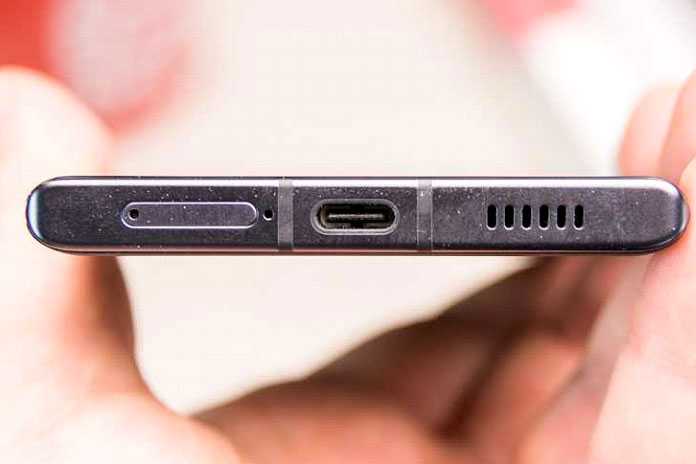
Аналогичная история с зарядкой. Проводная зарядка мощностью 65 Вт довольно быстрая, ее достаточно для восстановления 81% заряда батареи за полчаса. Он быстрее, чем любой телефон, продаваемый Apple, Google или Samsung, но значительно отстает от конкурирующих устройств от Oppo и Xiaomi. Опять же, хорошо, но не отлично.
Наконец, нет возможности беспроводной зарядки. По этой цене это небольшое разочарование, так как большинство конкурентов упаковали бы его, особенно для телефона, позиционирующего себя как вариант «Ультра».
ZTE Axon 40 Ultra — камера
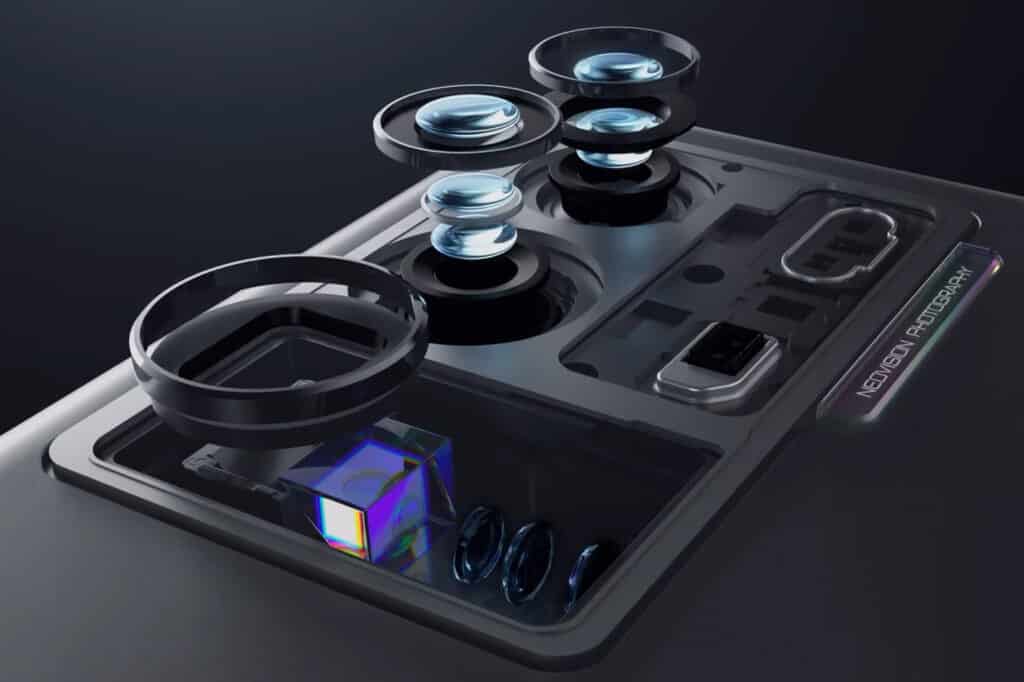
ZTE потратила много денег на камеры, как и в случае с Axon 30 Ultra: три 64-мегапиксельные задние камеры. Это большой массив, но если вам нравится масштабировать, он может подойти. Уже после первого снимка были видны детали на основных 35-мм изображениях. Это также отличное фокусное расстояние для путешествий. Без какой-либо обработки цвета были яркими, изображение четким, и они выглядели просто фантастически. Даже фотографии со сверхширокоугольным объективом не теряют своей красоты, а 0.4-кратный зум позволяет сделать много кадров.
Однако 64-мегапиксельные камеры превзошли все ожидания. Что удивительно, учитывая возможности искусственного интеллекта, например, в Pixel 6 Pro. В то время как телеобъектив создает отличные изображения при ярком свете, он, как правило, не впечатляет тем, что рисует что-либо, кроме оптического зума. Даже при 10-кратном увеличении изображение начинает размываться, и каждый шаг до максимального 40-кратного увеличения ухудшает ситуацию и не может сравниться с цифровым зумом Google или Samsung. Подводя итог, в отличие от Samsung S22 Ultra, этот массив камер не предназначен для масштабирования, хотя это скорее новинка, чем необходимость.
Запись видео
Можно также снимать видео с разрешением до 8K и 120 кадров в секунду при разрешении 4K, что на практике работает нормально, но автофокус чертовски медленный для любых серьезных целей видеосъемки, таких как видеоблог — придерживайтесь записи семейного видео.
Датчик селфи
Учитывая уникальное расположение 16-мегапиксельной селфи-камеры под экраном, вам может быть интересно, насколько хорошо она работает как камера. К сожалению, вот когда это становится очень увязшим. Селфи плохого качества, фотографии размытые и нечеткие. Выберите другой, если вам нравится делать селфи или совершать видеозвонки с помощью телефона.
Features
has 5G support
ZTE Axon 40 Ultra
The fifth-generation wireless technology delivers higher speeds and lower latency than the previous, fourth-generation tech.
Wi-Fi version
Wi-Fi 6 (802.11ax), Wi-Fi 5 (802.11ac), Wi-Fi 4 (802.11n)
The Wi-Fi versions supported by the device.
download speed
10000 MBits/s (Qualcomm Snapdragon 8 Gen1)
This is the maximum download speed supported. In reality, the download speed will usually be lower, as it will be affected by other factors (such as your home/mobile network speeds).
upload speed
3000 MBits/s (Qualcomm Snapdragon 8 Gen1)
This is the maximum upload speed supported. In reality, the upload speed will usually be lower, as it will be affected by other factors (for example your home/mobile network speeds).
Has USB Type-C
ZTE Axon 40 Ultra
The USB Type-C features reversible plug orientation and cable direction.
USB version
3.1
Newer USB versions are faster and have better power management.
has NFC
ZTE Axon 40 Ultra
NFC (near-field communication) allows a device to perform simple wireless transactions, such as mobile payments. Note: this feature may not be available in all markets.
SIM cards
2 SIM
The number and type of SIM cards supported.
Has a fingerprint scanner
ZTE Axon 40 Ultra
The device has a fingerprint scanner which identifies the user.
Let’s talk about the cameras on the ZTE Axon 40 Ultra

That crazily huge camera island on the rear of the Axon 40 Ultra houses three 64 MP – yes that’s correct, all cameras on the rear are now 64MP – cameras. There’s a 35mm equivalent standard or main camera, 16 mm focal length equivalent ultrawide, and a 91mm focal length telephoto camera that has optical image stabilization.
On the front, there is a 16MP selfie camera which for the most part I think we should ignore because the whole reason to buy this smartphone is for the rear cameras and a notchless display.
Daylight pictures are great from all three cameras
All three cameras take great pictures in daylight. And since the main camera has a 35mm equivalent lens it gets good background separation/blur without any software tricks. I did notice that the AI toggle in the camera app did not produce any meaningful changes to the pictures so I did leave it in the off position for most of the review.
Advertisement
For those looking for punchy pictures – Samsung or Xiaomi – might have to use a filter or two because the results are pretty close to what you see with the naked eye. I prefer the results from this smartphone but some people want pictures from the camera to be shared right away on social media. For these folks, there might be an extra step or two before they can share those pictures from the Axon 40 Ultra.
Nighttime pictures are excellent using the Night photography mode
The trend with good pictures from all three cameras continues in low light as well. However, turning on night mode helps improve shadows and balances the exposure in most situations. In certain cases, though the night mode results might look artificial and in that case maybe you can snap another picture with the night mode off.
The ultrawide camera has autofocus so you can use it to take ‘macro’ photos by getting up close to the object. The results aren’t dedicated macro camera level but still good enough to share with friends via messaging or social media apps.
Advertisement
Selfies aren’t that great
The downside of having a screen that completely hides the selfie camera is that the photos from the selfie camera are barely okay. ZTE has tried quite a few tricks to improve the selfie camera and the display yet the end result is still what was there in the first generation Axon 20 5G.
It takes quite a bit of practice to take decent selfies with this phone. The main issue is to not have any direct source of light behind you while taking a selfie and moving around for quite a bit of time till you get the exposure and light correct. Once that is done, you will be able to get a passable selfie. So if you are into selfies stop right here and get a different smartphone.
Advertisement
Two-minute review
Glance at the ZTE Axon 40 Ultra, and you might easily mistake it for Samsung’s top-end Galaxy S22 Ultra. It’s of a similar size and look, except for the logo and some deviation in the design of the camera bump.
However, the more time we spent testing for this ZTE Axon 40 Ultra review, the more we became aware of some rough edges here and there. The devil’s in the detail, as the saying goes, and the ZTE does suffer a few bugs in the software and camera departments.
Jump to…
But with a price that comes in way below that of Samsung’s flagship, and a feature set that (aside of the camera lineup) is actually pretty similar, there are likely to be many folk who find the ZTE better suited to their needs. Don’t write off this device just because it’s from a lesser-known company.
One of the key features of the ZTE Axon 40 Ultra is its under-display front camera. It means the selfie snapper doesn’t obstruct a section of the screen, because it’s actually hidden underneath it.
As such, this device is superb for viewing videos or playing games. However, the downside is the quality of those selfies, which appear to display a ghostly glowing aura; it might seem artistic had it been intentional. Self portraits taken with this device aren’t great either.
Also of note in the camera department is ZTE’s handling of the triple-lens camera on the Axon 40 Ultra. Unlike the Samsung, which includes five rear snappers, each with different lenses and sensors, ZTE has opted to feature the same 64-megapixel sensor on all three rear cameras. Clearly, when it comes to the quality of camera phones, ZTE is putting its eggs in the basket of “more megapixels equals better pictures”.
This doesn’t exactly play out in the real world, though, and it’s another area where the Axon 40 Ultra flags behind the competition. However, this is on comparing this device to high-price rivals, not other phones in its price range such as the iPhone 13, Samsung Galaxy S22 and Xiaomi 12. Compared to those rivals the Axon is good, although inconsistent.
In other areas, the phone feels impressive for its price. Design-wise, it’s exquisite, with a “waterfall” display that sees the edges curve dramatically – which means the Axon 40 Ultra feels super-comfortable in the hand. The large rear camera bump gives the phone a commanding look, without being so big as to make the handset unwieldy.
The display is fantastic, delivering for high resolution, large size, high refresh rate and support for over a billion colors. As a result of those screen specs and the lack of an annoying front-facing camera to get in the way, watching movies or TV shows on the Axon 40 Ultra proved a real treat.
(Image credit: Future)
The handset is also super-powerful, bringing many good times playing games on the device. However, as is the case with most phones using the Snapdragon 8 Gen 1 chipset, the Axon 40 Ultra was prone to heating up quickly.
If you’ve been looking for an affordable alternative to the Samsung Galaxy S22 Ultra, then ZTE Axon 40 Ultra is a better choice than the Galaxy S22 and S22 Plus, offering a similar design and lots of power.
There are a few rough edges – save for in the design, ironically, where the edges are all smooth – but this is a great Android flagship that delivers way more than its price would suggest.
ZTE Axon 40 Ultra — цена и доступность
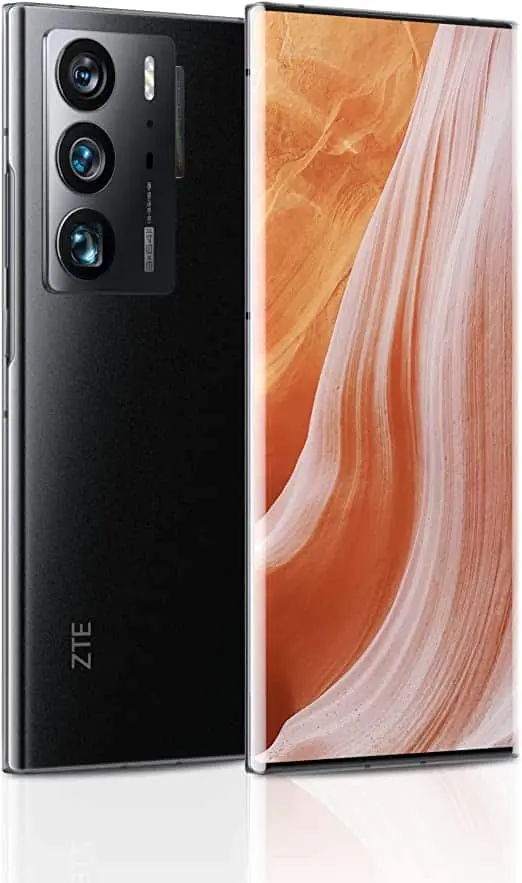
Axon 40 Ultra теперь доступен на международном уровне, однако по большей части его можно приобрести только прямо на веб-сайте ZTE. Он доступен в двух вариантах: конфигурация 8 ГБ + 128 ГБ стоит 799 долларов США / 709 фунтов стерлингов, тогда как конфигурация 12 ГБ + 256 ГБ стоит 899 долларов США / 809 фунтов стерлингов.
Это относительно разумная цена за то, что вы получаете. По размеру, характеристикам и функциям камеры он практически не уступает Xiaomi 12 Pro, Samsung Galaxy S22 Ultra или Oppo Find X5 Pro. Тем не менее, это менее дорого. Если вы не возражаете против ограничений камеры для селфи, это будет хороший вариант для любителей тех телефонов, чьи финансы не идут намного дальше.
ZTE Axon 40 Ultra price and availability
The Axon 40 Ultra costs $799 / £709 (roughly AU$1,200) for 8GB of RAM and 128GB of storage – a surprisingly low price given the specs and design on offer.
A version with 12GB of RAM and 256GB of storage comes in a fair bit pricier at $899 / £809 (around AU$1,430).
For context, the standard model of Samsung Galaxy S22 with 128GB of storage costs $799 / £769 / AU$1,249, while the iPhone 13 is a little bit pricier in some regions at $799 / £779 / AU$1,349. So, depending on where you live, the ZTE phone either matches or undercuts two significant rivals, despite offering a far more premium build.
(Image credit: Future)
The phone launched in May 2022 in China, but only went on sale in June for the rest of the world. The device isn’t currently available in Australia.
Value score: 4/5
ZTE Axon 40 Ultra: Design
- Beautiful design
- Big camera array
- Completely unimpeded display
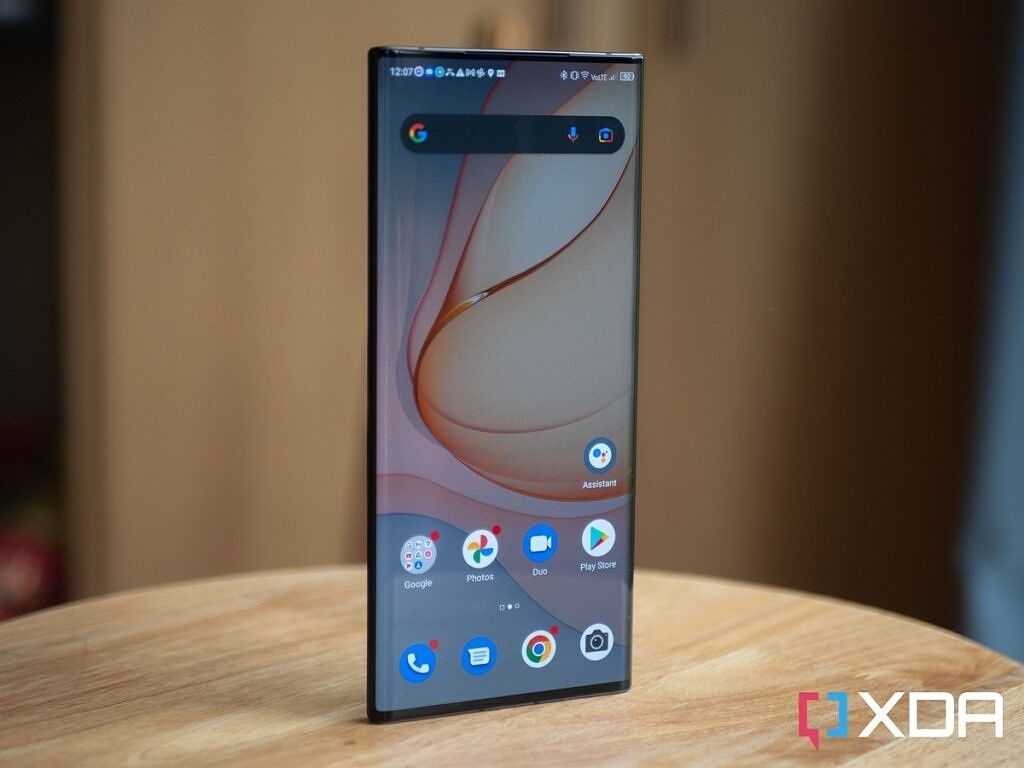
The ZTE Axon 40 Ultra packs an incredibly premium design, with thin bezels and a soft-touch glass back that sparkles under specific lighting conditions. It feels good in the hand and the camera island on the back packs three equally-sized sensors, along with additional camera branding. Finally, the «ZTE» insignia is emblazoned on the bottom.
The front of the phone is equally premium. The large 6.8-inch panel goes edge to edge thanks to the waterfall display, and the corners have such a small radius that it doesn’t quite look like they’re curved. It basically looks like a recent Samsung Galaxy Note/S22 Ultra, or a Google Pixel 6 Pro.
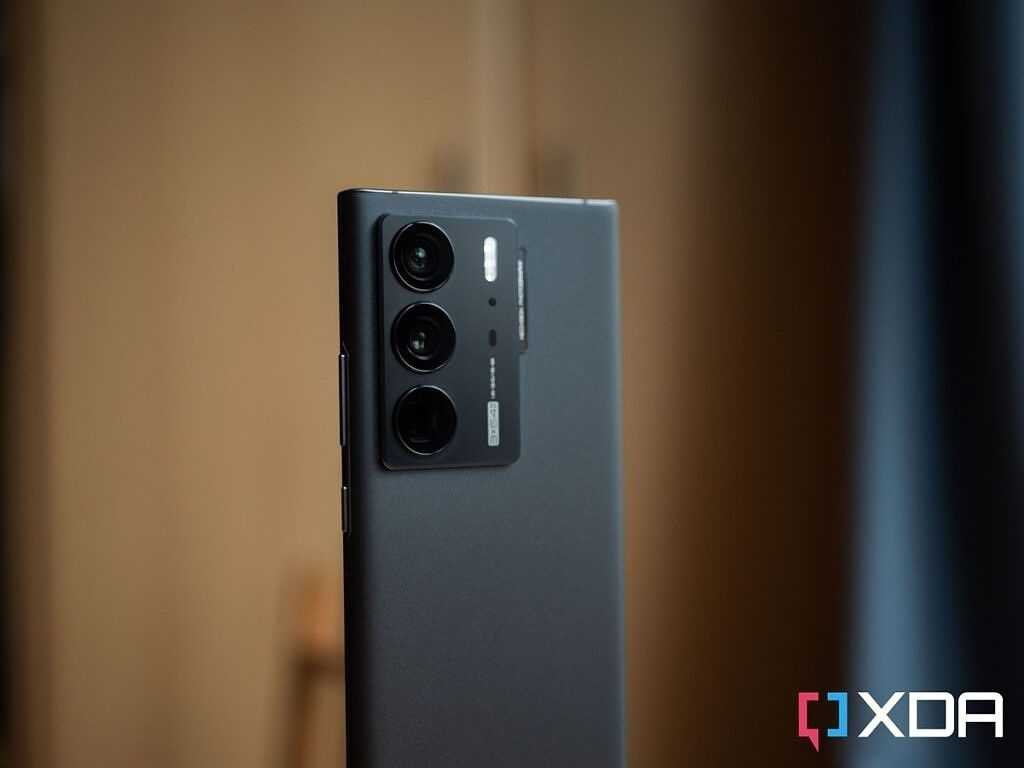
The best part of the front is how completely undetectable the under-display selfie camera is. It’s way harder to see this time around, and it’s very easy to forget that it’s even there. Watching Netflix, YouTube, and just using my phone is extremely nice thanks to it. It’s something I missed from the likes of the OnePlus 7 Pro with its pop-up camera, and while the Axon 20 nearly scratched that itch for me, the low pixel density around the camera ruined it.
When it comes to pixel density, I was worried that the Full HD panel would be poor on this size display, but I was wrong. It looks good and is barely noticeable when just using your phone — though I still wish it had a Quad HD display. I do wonder if the lower pixel density of the Full HD panel is helpful for the camera, as it would explain why an otherwise super-flagship phone only has a 1080p display.
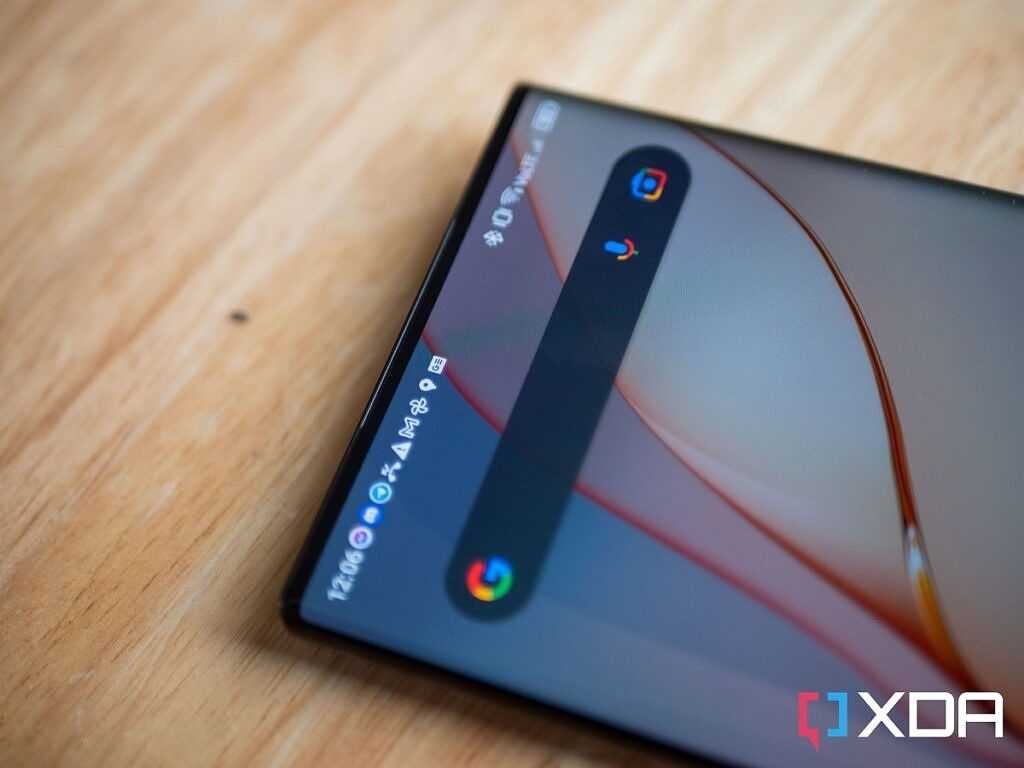
Focusing on that under-display camera itself, it’s possible to see it, but only in specific lighting and only when tilting the phone a certain way. It’s much harder to catch it, and you won’t really ever spot it when looking at it head-on. It’s a big improvement from the company’s past devices that packed this camera system, as you’ll nearly never see it. Even in the above photo, you need to look hard for it. Here’s a tip: look directly beside the Google News notification icon.
Specification comparison:
| Processor | Qualcomm SM8450 Snapdragon 8 Gen 1 | Qualcomm SM8250 Snapdragon 865 5G | ||||||
| Market (main) | Smartphone | Smartphone | ||||||
| ISA | ARMv9-A (64-bit) | ARMv8-A (64-bit) | ||||||
| Microarchitecture | Cortex-X2, Cortex-A710, Cortex-A510 | Cortex-A77, Cortex-A55 | ||||||
| Core name | Kryo | Kryo 585 Prime, Kryo 585 Gold, Kryo 585 Silver |
||||||
| Family | Snapdragon | Snapdragon 800 | ||||||
| Part number(s), S-Spec | SM8450 | SM8250, SDM865 | ||||||
| Release date | Q4 2021 | Q4 2019 | ||||||
| Lithography | 4 nm 4LPE | 7 nm N7P | ||||||
| Cores | 8 | 8 | ||||||
| Threads | 8 | 8 | ||||||
| Base frequency | 1.8 GHz | 1.8 GHz | ||||||
| Turbo frequency | 3.0 GHz | 2.84 GHz | ||||||
| Energy cores | 4x Qualcomm Kryo Silver @ 1.8 GHz | 4x Qualcomm Kryo 585 Silver @ 1.8 GHz | ||||||
| High performance cores |
1x Qualcomm Kryo Prime @ 3.0 GHz, 3x Qualcomm Kryo Gold @ 2.5 GHz |
1x Qualcomm Kryo 585 Prime @ 2.84 GHz 3x Qualcomm Kryo 585 Gold @ 2.42 GHz |
||||||
| Cache memory | 6 MB | 2 MB | ||||||
| Max memory capacity | 16 GB | 16 GB | ||||||
| Memory types | LPDDR5-3200 | LPDDR4X-2133, LPDDR5-2750 | ||||||
| Max # of memory channels | 4 | 4 | ||||||
| TDP | 9 W | 10 W | ||||||
| GPU integrated graphics | Qualcomm Adreno 730 | Qualcomm Adreno 650 | ||||||
| GPU execution units | 3 | 2 | ||||||
| GPU shading units | 768 | 512 | ||||||
| GPU clock | 818 MHz | 587 MHz | ||||||
| GPU FP32 floating point | 2,764.8 GFLOPS | 1,250 GFLOPS | ||||||
| Socket | SoC | SoC | ||||||
| AI accelerator | Qualcomm AI Engine | — | ||||||
| DSP | Qualcomm Hexagon | — | ||||||
| ISP | Qualcomm Spectra | — | ||||||
| Max display resolution | 4K@60Hz; QHD+@144Hz | — | ||||||
| Video decoding | H.265, H.264 4K@60Hz, QHD+@144Hz | — | ||||||
| Video encoding | H.265, H.264 4K@120Hz | — | ||||||
| Max camera ISP | 200MP; 108MP; 64+36MP; 3x 36MP | — | ||||||
| Max video capture | 8K@30fps; 4K@120fps; 720p@960fps | — | ||||||
| Cellular technologies | 5G, HSPA, CDMA, EVDO, GSM, EDGE | — | ||||||
| GNSS | GPS, Glonass, Beidou, Galileo, QZSS, SBAS, NavIC |
— | ||||||
| Modem | Qualcomm Snapdragon X65 5G/LTE | — | ||||||
| LTE download speed | Up to 2.5 Gbit/s | — | ||||||
| LTE upload speed | Up to 316 Mbit/s | — | ||||||
| LTE category | Cat 22 | — | ||||||
| 5G download speed | Up to 10 Gbit/s | — | ||||||
| 5G upload speed | Up to 3 Gbit/s | — | ||||||
| Connectivity | USB 3.1, USB-C | — | ||||||
| Wi-Fi | Wi-Fi 802.11 a/b/g/n/ac/ax Wi-Fi 6E | — | ||||||
| Bluetooth | Bluetooth 5.3, LE | — | ||||||
| Audio | Qualcomm WCD9385, Qualcomm WSA8835 | — | ||||||
| AnTuTu | 925,976 | 558,510 | ||||||
| (Android)PassMark CPU Mark | 4,942 | 4,685 | ||||||
| (Android)Geekbench 4 single core | 6,175 | 4,134 | ||||||
| (Android)Geekbench 4 multi-core | 14,508 | 12,548 | ||||||
| (Android)Geekbench 5 single core | 1,108 | 871 | ||||||
| (Android)Geekbench 5 multi-core | 3,407 | 3,069 | ||||||
| (Android)Geekbench 6 single core | 1,506 | 1,174 | ||||||
| (Android)Geekbench 6 multi-core | 3,825 | 3,233 | ||||||
| (SGEMM)GFLOPS Performance | 165.1 GFLOPS | 122.38 GFLOPS | ||||||
| (Multi-core / watt performance)Performance / watt ratio | 1,612 pts / W | 1,255 pts / W | ||||||
| Amazon | ||||||||
| eBay |
Battery
- Large 5000mAh capacity
- 65W fast charging
- No wireless charging
The Axon 40 Ultra includes a 5000mAh capacity battery, which is what I’d hope to see on a handset with demanding screen specs. Still, this is one spec that really needs to be tested in real life to see how it holds up, because sometimes the numbers alone don’t give the full story.
In my experience the phone held up pretty well, delivering a good day’s battery life when used both moderately and intensively. To give specific examples, the percentage ticked down by 6% when watching a YouTube video for an hour on the default screen settings, and streaming music over Spotify for an hour consumed 4% off the battery.
When it’s time to recharge the battery, there’s 65W wired charging to top up the battery again swiftly. Our unit was supplied with a European charger, so we can’t be sure how rapidly the phone could be topped up with the brand’s proprietary UK charger. There’s no option for wireless charging here, so you’ll have to do things the traditional way.
Cameras
megapixels (main camera)
64 MP & 64 MP & 64 MP
The number of megapixels determines the resolution of the images captured with the main camera. A higher megapixel count means that the camera is capable of capturing more details. However, the megapixel count is not the only important element determining the quality of an image.
megapixels (front camera)
16MP
The number of megapixels determines the resolution of the images captured with the front camera. A higher megapixel count means that the front camera is capable of capturing more details, an essential factor for taking high-resolution selfies.
has built-in optical image stabilization
ZTE Axon 40 Ultra
Optical image stabilization uses gyroscopic sensors to detect the vibrations of the camera. The lens adjusts the optical path accordingly, ensuring that any type of motion blur is corrected before the sensor captures the image.
video recording (main camera)
4320 x 30 fps
The maximum resolution available for videos shot with the main camera. Although it may be possible to choose among other frame rates, those recordings usually have lower resolutions.
wide aperture (main camera)
f/1.6 & f/3.5 & f/2.4
With a wider aperture the sensor can capture more light, helping to avoid blur by enabling a faster shutter speed. It also provides a shallow depth of field, allowing you to blur the background to focus attention on the subject.
Has a dual-tone LED flash
ZTE Axon 40 Ultra
A dual-tone flash has LED lights with different color temperatures, delivering a better color balance to photos and videos.
has a BSI sensor
ZTE Axon 40 Ultra
A BSI (backside illuminated) sensor is a camera image sensor which captures better quality images in poor lighting conditions, and offers better overall sharpness and image quality.
has continuous autofocus when recording movies
ZTE Axon 40 Ultra
When recording movies they stay focussed and sharp.
Has phase-detection autofocus for photos
ZTE Axon 40 Ultra
Phase-detection autofocus is much faster than a contrast detection autofocus, allowing for sharper images.
Cameras
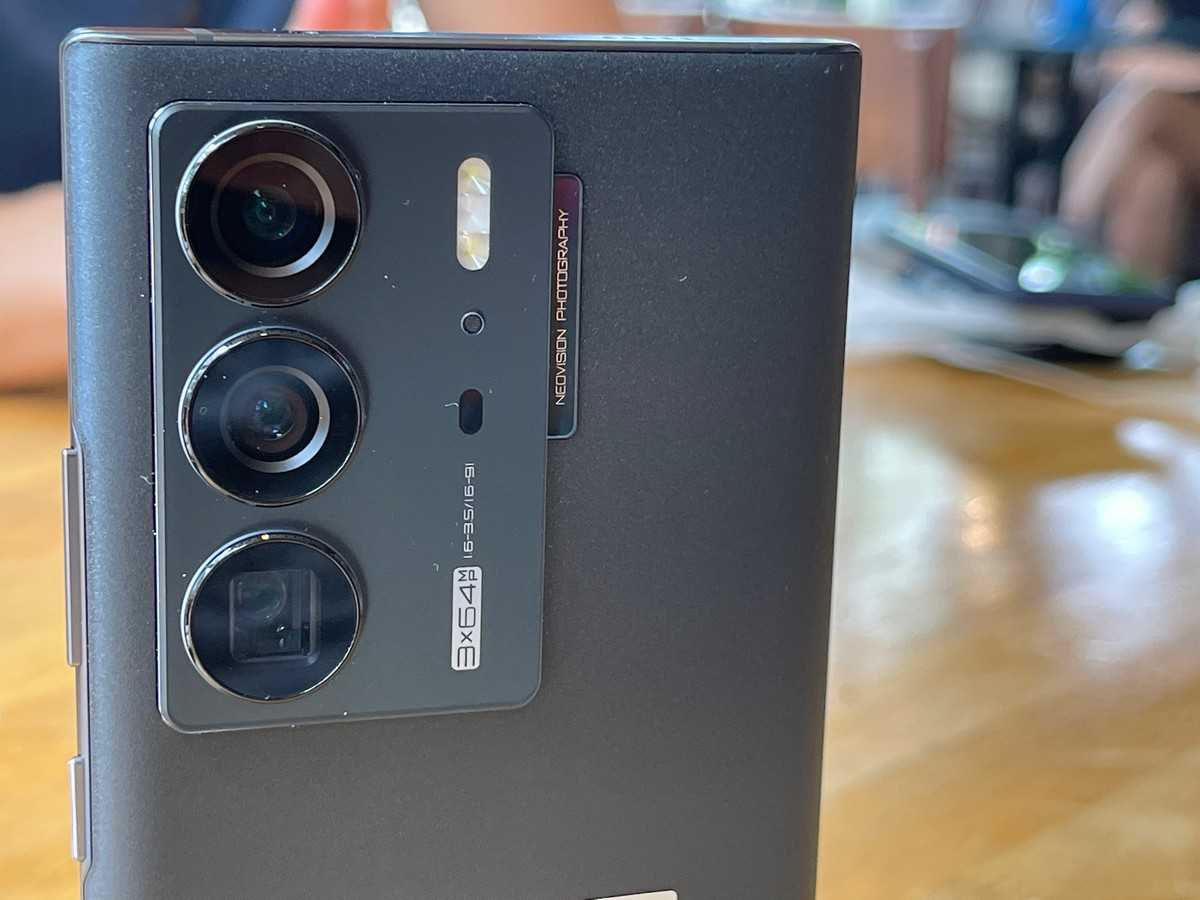 Here’s where things get a little disappointing. ZTE’s camera software is packed full of features, but it feels overly complicated. There are a lot of icons that don’t necessarily tell you what it does, so it feels a lot like trial and error.
Here’s where things get a little disappointing. ZTE’s camera software is packed full of features, but it feels overly complicated. There are a lot of icons that don’t necessarily tell you what it does, so it feels a lot like trial and error.
It also doesn’t feel very consistent across the different modes. For example, in the default Photo mode, you can tap the bottom to switch between the ultrawide, normal, and telephoto cameras. But then when you switch over to other modes like Pro mode or Night mode, those icons are gone and are replaced by new icons on the left side of the UI.
The camera software also feels kind of laggy. In the default Photo mode, whenever you try to pan around and adjust your composition and framing, the software gets in the way which can lead to stuttering. Switching over to the Pro mode seems to alleviate that, but not everyone knows or needs to use Pro mode so maybe ZTE should have paid more attention to the default mode.
As for the actual photos themselves, there’s not much to complain about, but there’s also not much to be impressed by either. In sufficient lighting, like a brightly lit room or in direct sunlight, the photos taken by the ZTE Axon 40 Ultra look fantastic. They are incredibly sharp and have a lot of detail to them.
Portrait mode is also great when you’re trying to take photos of people, but when it comes to non-humanoid objects, that’s where the camera’s software falters. To be fair, most smartphone makers probably designed portrait mode with human or animal subjects in mind, less so for objects. But seeing as other phones can still take decent photos of objects using portrait mode, it is a bit of a let down on ZTE’s end. The bokeh seems to be applied rather unnaturally as the software struggles to distinguish the subject from the background.
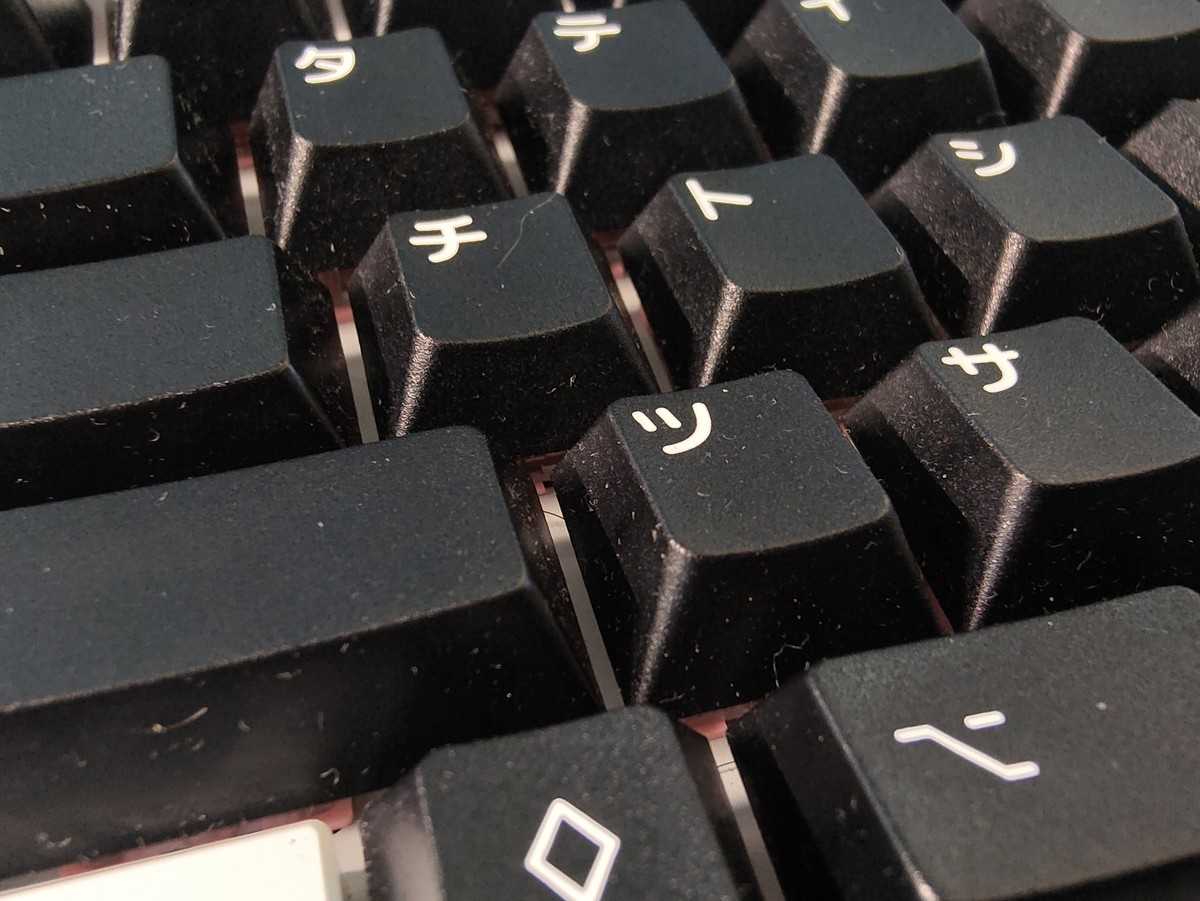 Also, when taking photos of high contrast subjects, chromatic aberrations become a lot more apparent. It is possible to fix it using photo editing software, but it’s an extra step that not users might want to take.
Also, when taking photos of high contrast subjects, chromatic aberrations become a lot more apparent. It is possible to fix it using photo editing software, but it’s an extra step that not users might want to take.
As for video recording, the Axon 40 Ultra supports multiple encoder formats and also a range of resolution of up to Ultra HD 4K @ 120fps. One of the features I like about video mode is when you start recording, there’s a slider next to the shutter button that lets you zoom in and out while recording. The zoom effect is very smooth and does not stutter, which could be great effects like the Dolly Zoom.
Now onto the front-facing camera. To create a seamless look, ZTE has opted to use an in-display camera instead of utilizing a cutout or notch. It looks great in terms of design, but when it comes to functionality, it is more miss than hit.
When switching to the front-facing camera, straightaway you will notice that the image quality on the screen looks terrible. There is a general haziness to the image and there is a lot of halo-ing going on. Unfortunately, these effects are carried over to the actual photo itself.
While the actual photo does look slightly more cleaned up compared to what you see on the viewfinder, overall it looks very soft and a lot of details are lost. It’s not hard to see why other companies like Apple and Samsung have yet to embrace the in-display camera design as clearly a lot of work still needs to be done to perfect it.
Overall, the front-facing camera is functional but perhaps not the best quality for selfies.
Camera
On the DSP side, Qualcomm Spectra image signal processor can process 3.2 Gigapixels/sec for the cameras with an 18-bit ISP that captures 4000x more camera data than 14-bit predecessors, suitable for a single 200MP camera, 64MP burst capture, or 8K HDR video and mega low light photos. The encode/decode engines allow for 4K Video Capture @ 120 FPS, 8K video capture at 30fps, Bokeh Engine for Video Capture, Video super-resolution.
-
Snapdragon Sight features our first-ever always on 18-bit ISP that captures 4000x more camera data then 14-bit predecessors
- You can also capture 8K HDR video and mega low light photos
- Plus, Mega Low Light Mode snaps 30 images and merges the best parts into one shot for brighter, clearer, more colorful photos after dark.
ZTE Axon 40 Ultra: Display
Thanks to the selfie camera being hidden underneath the display, you’re getting an uninterrupted, 6.8-inch AMOLED display with a 1116 x 2480-pixel resolution, a 120Hz refresh rate, HDR10+ support and a claimed 1,500-nit peak brightness.
(Image credit: Future)
The end result is a gorgeously vivid, bright display that is viewable in all lighting conditions. Taking advantage of the display’s OLED benefits, the trailer for Spider-Man: No Way Home emanated depth in darker scenes, making the brighter effects of Doctor Strange’s spells really glow.
And of course, what about that bit of display over the front-facing shooter? As we found out with the Axon 30 5G, the pixel matrix wasn’t quite enough to mask the lens. For the 40 Ultra, however, the camera is completely invisible. I looked at this phone from every possible angle and could not see the telltale trap door whatsoever.
Overall, the display makes for a lovely viewing experience for gaming, binge watching and getting stuff done.
Performance wise the ZTE Axon 40 Ultra is good
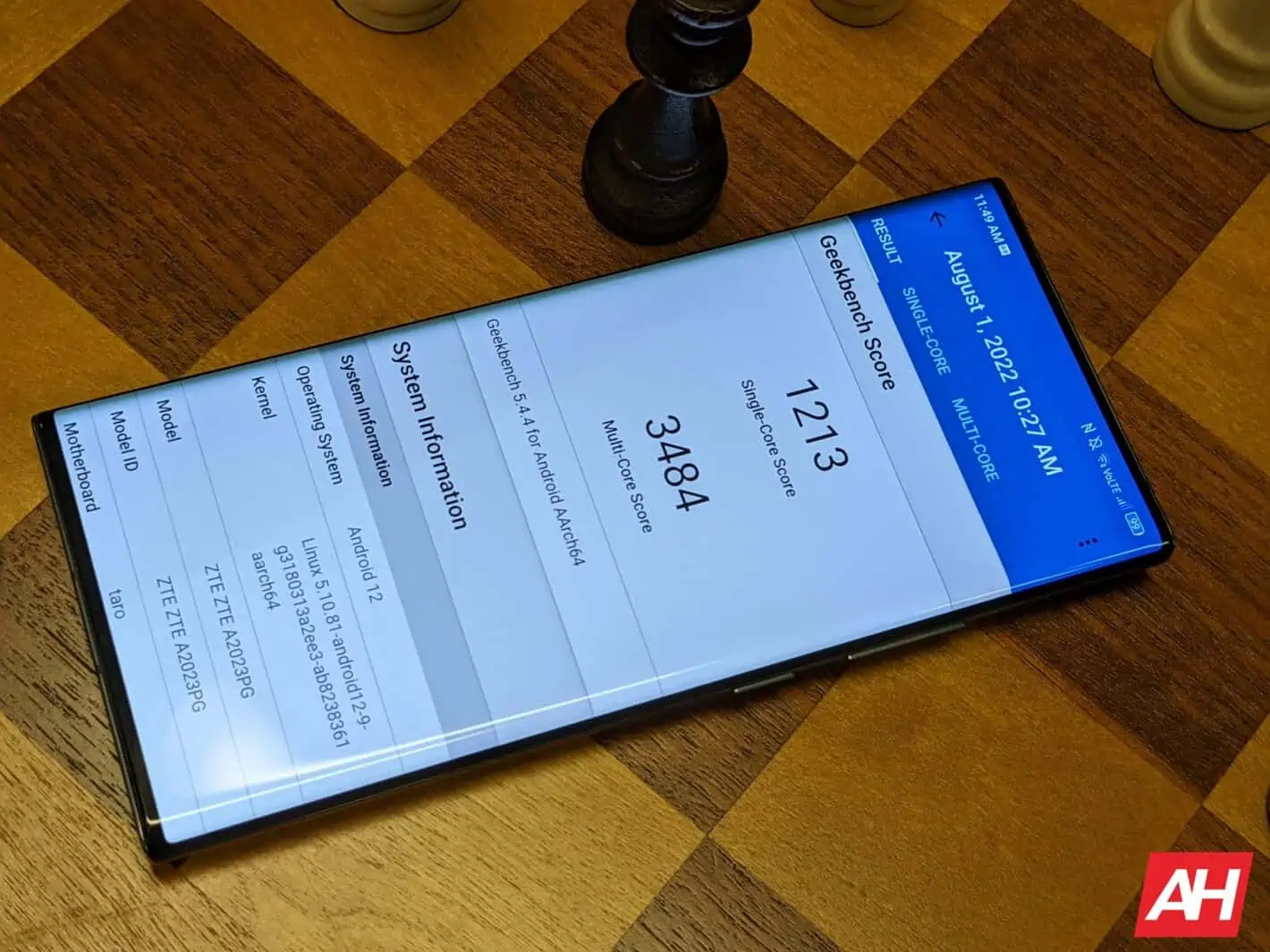
Like most other top-shelf Android devices, the ZTE Axon 40 Ultra uses the Snapdragon 8 Gen 1 as the CPU. We have covered various smartphones running the Snapdragon 8 Gen 1 chip. But just to recap, this is an octa-core CPU in a 1+3+4 configuration with the prime core topping at 3.0GHz and has the Adreno 730 as the GPU.
Advertisement
As usual there are multiple RAM and storage configurations available. The review unit sent by ZTE to AndroidHeadlines has 8GB RAM and 128GB storage. ZTE is offering a higher spec 12GB/256GB version globally whilst even higher versions are probably just for China.
Benchmark scores are in line with other Snapdragon 8 Gen 1 smartphones, albeit on the lower side. Not sure why ZTE is unable to extract higher performance out of the Qualcomm chip compared to the other smartphone manufacturers. Perhaps the 8GB RAM might be the issue.
Unless you are a hardcore gamer, there shouldn’t be any noticeable issue in terms of performance for daily use. Although the thermal management is good during gaming, the phone does get quite hot to handle under extended periods so that is something to watch out for.































